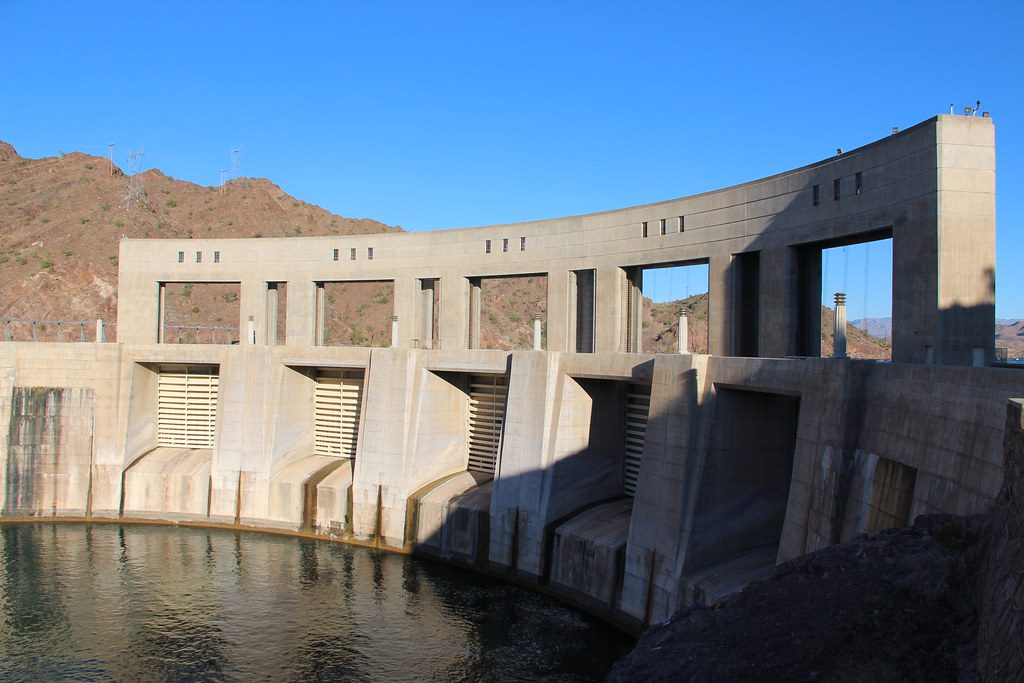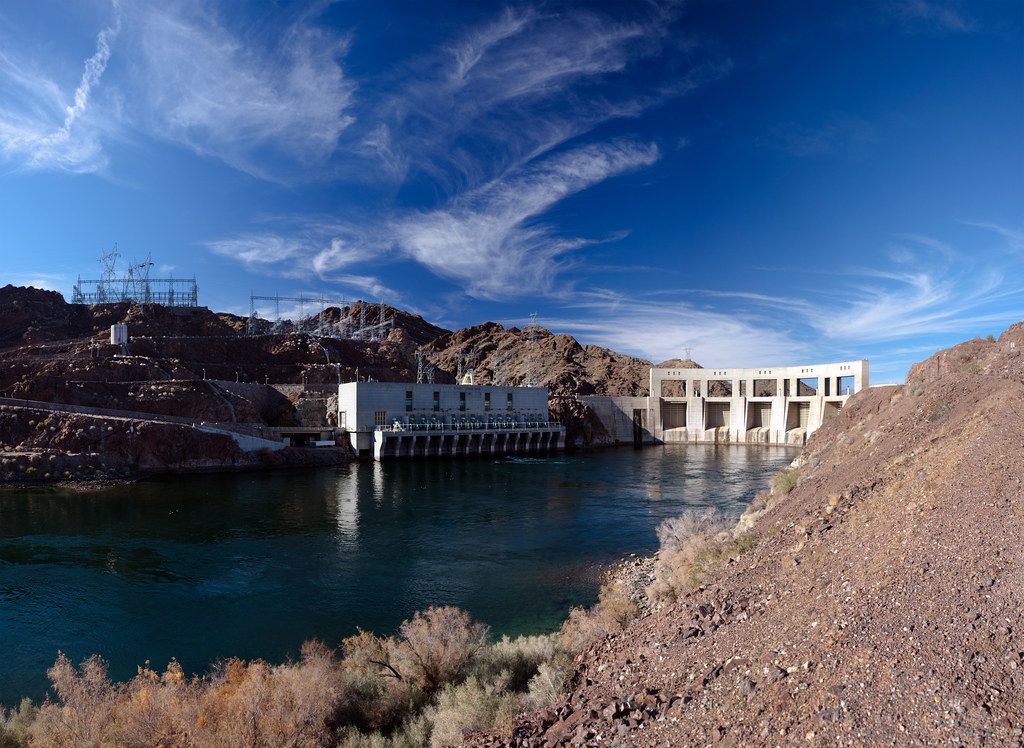Parker Dam is a concrete arch-gravity dam that crosses the Colorado River 155 miles (249 km) downstream of Hoover Dam. Built between 1934 and 1938 by the Bureau of Reclamation, it is 320 feet (98 m) high, 235 feet (72 m) of which are below the riverbed (the deep excavation was necessary in order to reach the bedrock on which the foundation of the dam was built), making it the deepest dam in the world.
The portion of the dam above the foundation stands 85 feet (25.9 m) tall, making it the only dam in the world that stands more underground than above ground. The dam’s primary functions are to create a reservoir, and to generate hydroelectric power. The reservoir behind the dam is called Lake Havasu and can store 647,000 acre⋅ft (798,000,000 m3; 2.11×1011 US gal; 1.76×1011 imp gal). The dam straddles the Arizona-California state border at the narrows the river passes through between the Whipple Mountains in San Bernardino County, California and the Buckskin Mountains in La Paz County, Arizona.

Lake Havasu backs up behind the dam for 45 miles and covers more than 20,400 acres (32 square miles). The reservoir’s total capacity is 646,200 acre-feet. The Metropolitan Water District`s W. P. Whitsett Intake Pumping Plant for the Colorado River Aqueduct is located on the shore of Lake Havasu about two miles upstream from the dam. The aqueduct begins at the intake pumping plant and extends 242 miles to its terminus at Lake Mathews near Riverside, California.
About half of the power generated at Parker Dam is reserved by MWD to pump Colorado River water along the Colorado River Aqueduct. The remaining power is marketed to users in California, Nevada and Arizona by the Western Area Power Administration. By contract, the use of active storage in Lake Havasu to generate power is limited to the elevation between 440 to 450 feet.
The Parker Powerplant includes a penstock gate structure, four penstock tunnels, and a powerplant building housing four hydroelectric generating units. Each of the four tunnels and penstocks conveying river water from the forebay at the left end of the dam to the turbines is 22 feet in diameter and has a water capacity of 5,575 cubic feet per second. The plant’s nameplate capacity is 120 megawatts.
According to usbr.gov; atlasobscura.com. Source of photo: internet








